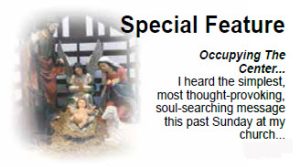In the workplace, friendliness and professionalism are both essential for creating a harmonious and effective environment. Friendliness helps build trust and open communication, making it easier for employees to collaborate and support one another. A positive, approachable demeanor can encourage coworkers to share ideas, ask questions, and seek guidance when needed. However, without balancing it with professionalism, excessive friendliness can blur boundaries, potentially leading to conflicts of interest or misunderstandings. Striking the right balance means maintaining a warm yet appropriate attitude that fosters connection while respecting professional boundaries.
Professionalism is the foundation that ensures work interactions remain respectful, equitable, and focused on the organization’s goals. Professionalism encompasses attributes like punctuality, reliability, and respect for colleagues’ time and perspectives. By maintaining a high level of professionalism, employees communicate that they value the standards and expectations of the workplace. For example, while it might be tempting to share personal details with a coworker to build rapport, doing so can sometimes lead to over-familiarity that detracts from productivity or creates distractions. Upholding professionalism, even in friendly interactions, allows individuals to build trust without compromising the work environment.
Establishing boundaries is crucial for maintaining this balance. Boundaries help employees recognize the limits of friendly behavior at work, avoiding situations that could lead to favoritism or unequal treatment. A helpful strategy is to keep interactions focused on work-related topics during work hours and save more personal conversations for breaks or social gatherings outside of work. Additionally, being mindful of topics discussed and maintaining discretion with personal information can protect privacy and ensure that friendly interactions don’t interfere with objective decision-making or performance evaluations.
Navigating this balance becomes even more critical for leaders and team members, whose roles often require a mix of approachability and authority. Executives who foster a friendly atmosphere make it easier for team members to feel comfortable sharing feedback and seeking help, which can be crucial for early problem-solving and morale. However, managers must be careful not to let their friendliness interfere with their ability to make unbiased decisions, enforce policies, or provide constructive feedback. Setting clear boundaries—such as focusing social conversations around team events or during breaks—can help managers create an environment where everyone feels valued without risking favoritism or compromising authority.
Leaders also benefit from being transparent about these boundaries. For example, they might communicate that they are open to casual chats but will uphold objectivity in performance reviews and conflict resolution. This transparency helps employees understand that friendliness from their manager does not guarantee special treatment and that decisions will still align with the organization’s goals. Clear communication, mutual respect, and a shared commitment to these principles can create a work environment where friendliness and professionalism enhance rather than conflict with each other, ultimately strengthening workplace relationships and productivity.
Finally, navigating these boundaries effectively requires self-awareness and adaptability. Team members should regularly assess their behavior and interactions to ensure that they remain professional and considerate of others’ boundaries. Leaders and managers play a significant role by modeling appropriate behavior and setting the tone for how friendly and professional interactions can coexist. Clear communication, mutual respect, and a shared commitment to the organization’s goals can create an environment where friendliness and professionalism are balanced, enhancing both workplace relationships and productivity.
By: Eric Betts, Assistant Professor | Course Developer, Hampton University School of Religion








